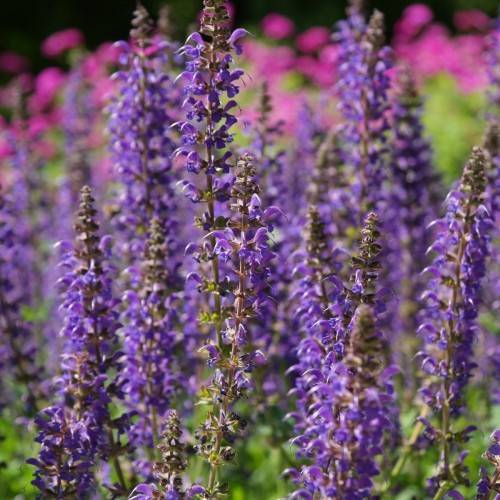
sage
Salvia 'Ultra Violet'
Cycle:
Herbaceous Perennial
Watering:
Minimum
Hardiness Zone:
6 - 9
Flowers:
Flowers
Sun:
Full sun
Leaf:
Yes
Growth Rate:
High
Maintenance:
Low
Drought Tolerant:
Yes
Salt Tolerant:
Yes
Care Level:
Medium
watering
Sage (Salvia 'Ultra Violet') is a fairly drought-tolerant plant, but it still needs regular watering for optimal growth. It is best to water the plant deeply once-to-twice a week, making sure the soil is evenly and thoroughly moistened. If the soil feels moist when poked, then the plant usually does not need to be watered. During periods of extreme heat or drought, it may be necessary to water more often. Additionally, make sure the plant receives direct morning sunlight.
sunlight
Sage (Salvia 'Ultra Violet') plants prefer full sun or at least 6 hours of direct sunlight per day. The best time for sage to receive sunlight is morning and late afternoon sun. During the summer months, the plant will best benefit from 8 to 10 hours of direct sunlight. When the sun is too hot, it can scorch the leaves of the plant, so it's best to keep this species in an area that is partially shaded in the midday.
pruning
Pruning is a beneficial practice for the health and vitality of Sage (Salvia 'Ultra Violet'). Generally, this shrub should be pruned annually, in early spring, after the plant begins to emerge from winter dormancy. This should be done after removing any winter dieback and prior to buds swelling. Pruning should be selective, removing only the growth that is broken, damaged, or diseased. If a whole branch needs to be removed, cut back to the next leaf bud that points in the direction of new growth. Pruning the plant in this manner will help to maintain a neat and full shape.
